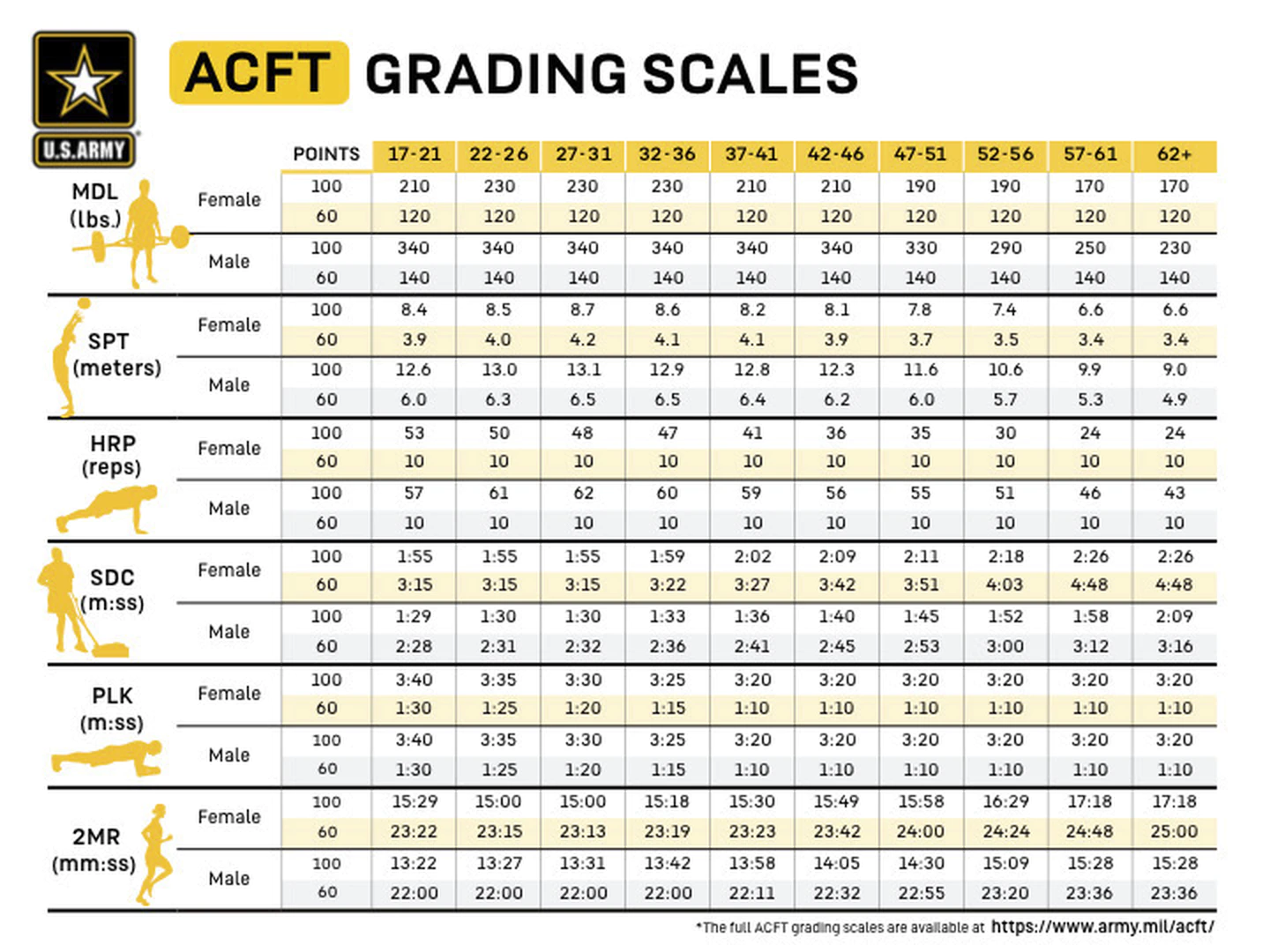Apparently, this is too hard for some people…
This is to help us prepare for war with Russia and China.
We need dumber, weaker, browner people in the military, because that’s the strength of our democracy.
The Army is moving forward with its long-awaited Army Combat Fitness Test this year, but the service has officially dropped the test’s attempt to set a gender- and age-neutral physical fitness standard — as well as any pretense that it’s formally tied to combat tasks, beyond having “combat” in its name.
The shifts come following an independent review of the test by RAND that Congress ordered in the fiscal 2021 defense policy bill.
Among the test’s changes are:
- The ACFT has adopted age- and gender-normed scoring tables, similar to those on the old Army Physical Fitness Test.
- The Army, backtracking, now says the test is a “general physical fitness assessment” not intended to predict success on the service’s Warrior Tasks and Battle Drills. That comes after RAND challenged the validity of data from the Army’s 2019 tests at Fort Riley, Kansas, that the service said proved the link.
- The leg tuck is no longer an event — the plank, with a newly lowered standard, is the only core event.
- A 2.5-mile walk has been added as an alternate aerobic event for troops whose medical profiles prevent them from running.
- The ACFT will not immediately impact personnel actions. It has phased implementation deadlines ranging from Oct. 1 of this year to April 1, 2024.
In a Monday media roundtable, Sergeant Major of the Army Michael Grinston acknowledged that there was a “conversation” about whether the ACFT’s name was still a good fit. He argued, though, that the name is justified because “in the U.S. Army, we actually — believe it or not — all go to combat.”
The RAND reportIn its independent review of some 630,000 ACFT results and the Army’s data and science underlying the test, RAND “highlighted weaknesses” in the Army’s arguments that the test can predict success in combat tasks, according to a copy of the report.
RAND researchers pointed towards a host of “anomalous findings” with the studies and University of Iowa research, including a small sample size of women and a study design that could have “masked” links between individual ACFT events and corresponding combat tasks.
“The leg tuck, for example, was not useful in predicting performance on combat tasks,” explained RAND’s Dr. Chaitra Hardison, the study’s lead author, in the Monday roundtable.
One of the reasons why Congress ordered the review was to determine whether critically short career fields would be disproportionately impacted. Enlisted fields with the highest failure rates, regardless of gender, included animal care, several non-combat medical specialties, cooks, ammunition stock control and human resources.
Additionally, the report’s analysis of around 460,000 soldiers’ ACFT scores revealed that women were failing the new test at alarming rates.
A total of 48% of active duty enlisted women and 28% of active duty female officers could not pass the test. Nearly 60% of enlisted Reserve and Guard women failed the ACFT, as did 51% of female Reserve officers and 43% of female Guard officers.
Hardison explained that “while the pass rate discrepancies alone do not mean the test is flawed, they are especially concerning when there is insufficient validity of evidence to support the test[’s link to combat tasks].”
That left the service “to grapple with a trade-off,” the researchers said in their concluding paragraph.
“Should all soldiers, regardless of age, gender, and MOS, be subject to the same physical fitness standards (which prioritize combat readiness), or should the test and policies be set such that all soldiers have a reasonable chance of passing but not at the same minimum level of physical fitness?” asked RAND.
The Army went with the latter option.
What are the ACFT scoring tables?
The new scoring tables for the permanent version of the ACFT are thus age- and gender-normed, much like the old Army Physical Fitness Test.
Brig. Gen. Scott Naumann, the Army’s director of training, emphasized that the Army “decided to implement the test as a general physical fitness assessment, as opposed to one that is designed to predict performance on a set of [combat] tasks,” in order “to address evidence shortfalls” with the University of Iowa study.
Linking the test directly to the Warrior Tasks and Battle Drills that all soldiers are expected to perform was one of the key components of maintaining age- and gender-neutral testing. But taking away that link to common soldier tasks made it more difficult to justify gender-neutral standards that resulted in such significant failure rates for women.
In some of the events — the run and the plank — the standard to score 60 points and pass the event was lowered from ACFT 3.0 for all gender and age groups. Other events feature lower minimum standards for women and increased minimum standards for men, such as the sprint-drag-carry and the standing power throw.
Naumann explained that the new scales “were developed…using data from the 630,000 ACFT scores that we’ve collected…historic performance rates from the APFT…and scoring scales from other branches of the U.S. military, particularly for the plank.”
This doesn’t even seem to be exclusively about women.
This is also about low testosterone soy people and fatties.
It’s also about women.
Women in the military are, as we know, our greatest strength.
 Daily Stormer The Most Censored Publication in History
Daily Stormer The Most Censored Publication in History




